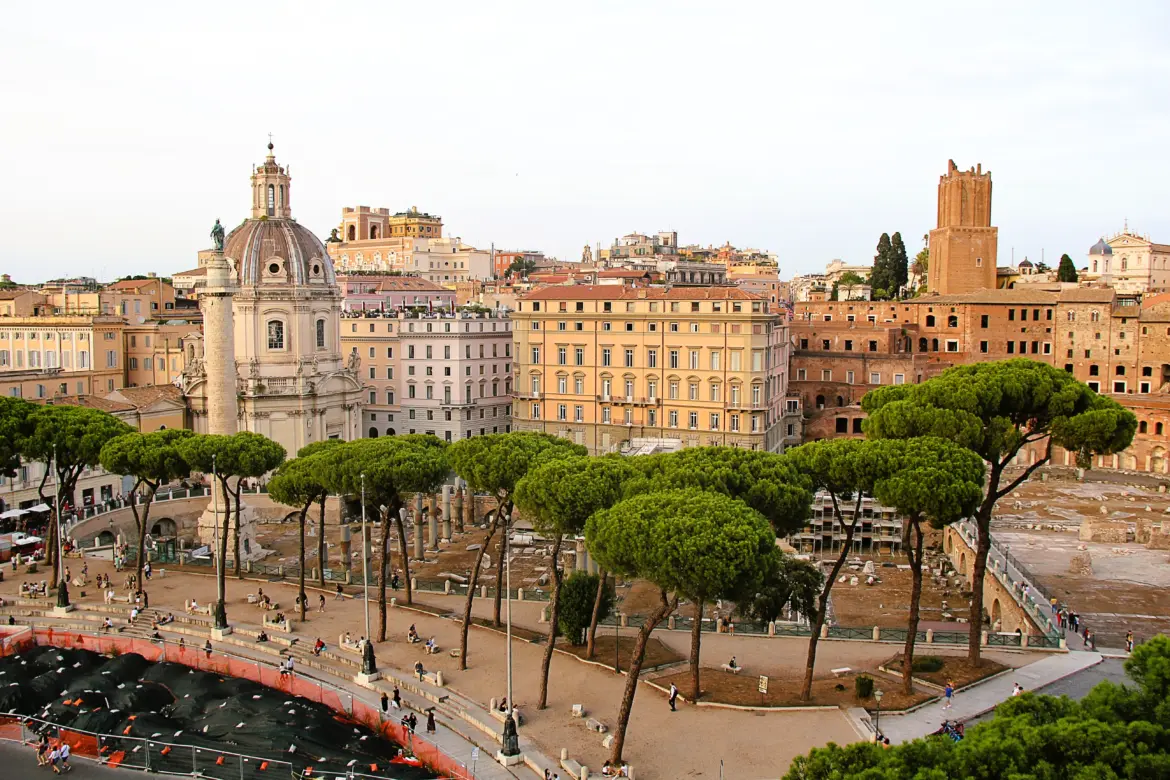Hello history lovers! ✨ If you’re anything like me, you love those moments when you stumble upon a place in Rome that stops you in your tracks, not because of crowds or clichés, but because of sheer grandeur and genius. That’s exactly how I felt when I first wandered through Trajan’s Forum. Tucked beside the bustling Via dei Fori Imperiali, this monumental complex feels like flipping through the last golden chapter of Imperial Rome, where ambition, artistry, and power collide in glorious ruins.
🏗️ Built by a Genius, for a Legend
Commissioned by Emperor Trajan and inaugurated in 112 CE, Trajan’s Forum was the last and largest of the Imperial forums. It was designed by the brilliant architect Apollodorus of Damascus, whose ingenuity gave us one of the most ambitious urban planning projects of the ancient world. To construct it, a huge swath of land was excavated, including leveling a saddle-shaped ridge between the Capitoline and Quirinal Hills. This feat alone was an engineering marvel. The forum was built to commemorate Trajan’s victory in the Dacian Wars, and every inch of it told the story of Roman power, virtue, and glory.
The complex once included:
- A massive basilica (Basilica Ulpia) for legal proceedings
- Two grand libraries (one Greek, one Latin)
- The towering and intricately carved Trajan’s Column
- A spacious open plaza filled with statues and arches
Sadly, the Temple of the Deified Trajan, which once stood behind the column, has not survived, but its legacy lingers in the layout and scale.
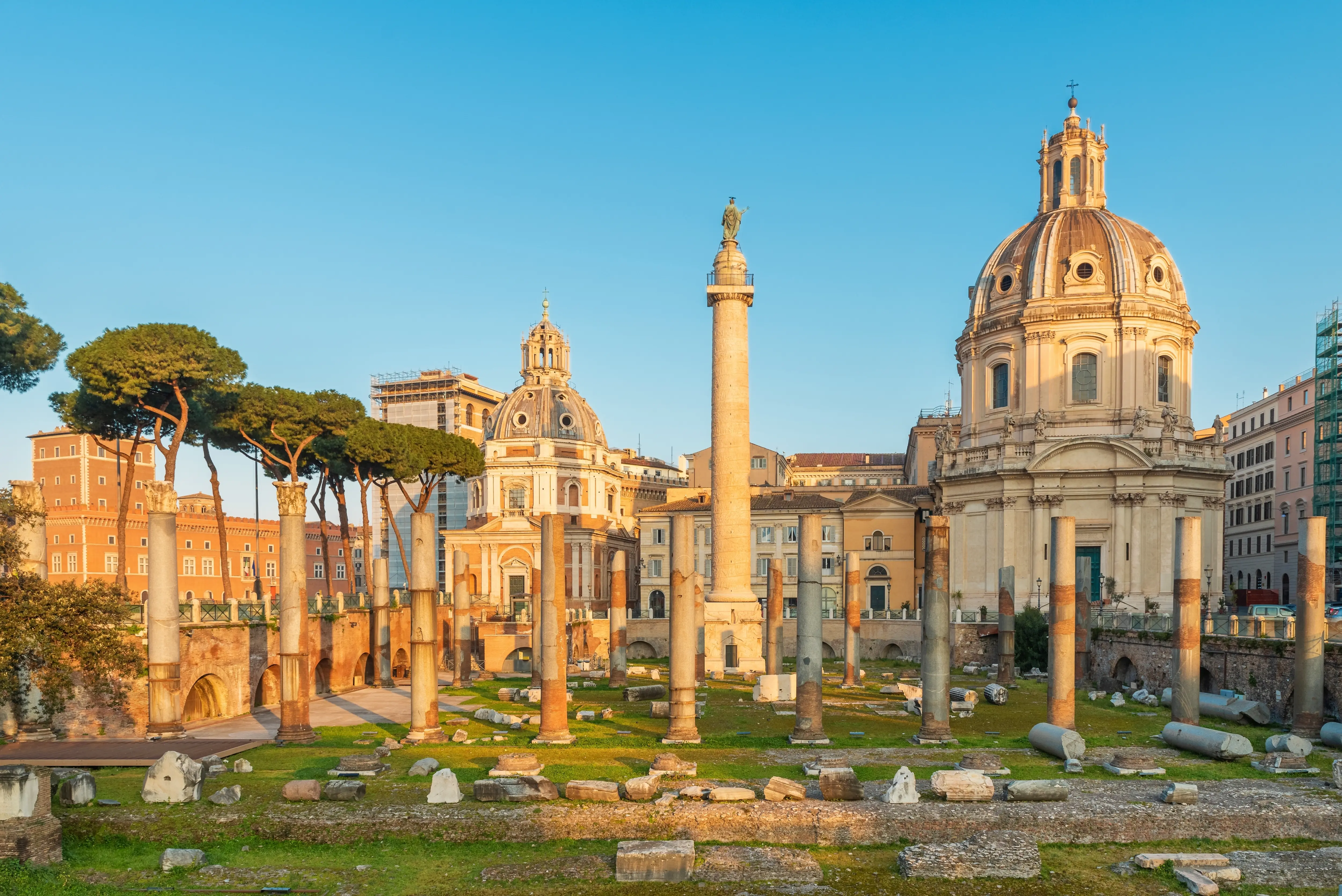
🧱 Layers of Propaganda and Power
Trajan’s Forum wasn’t just architectural grandeur, it was imperial messaging at its finest. Every column, statue, and building served to exalt the emperor and Rome’s achievements. The open plaza, flanked by exedrae (semicircular niches), held statues of conquered Dacians, creating a visual celebration of victory.
At the heart of it all is Trajan’s Column, a 30-meter-high narrative spiral that wraps around the emperor’s military triumphs. This masterpiece of storytelling in stone depicts scenes from the Dacian campaign with exquisite detail, from battle formations to bridge-building. At the top once stood a statue of Trajan himself, now replaced by Saint Peter.
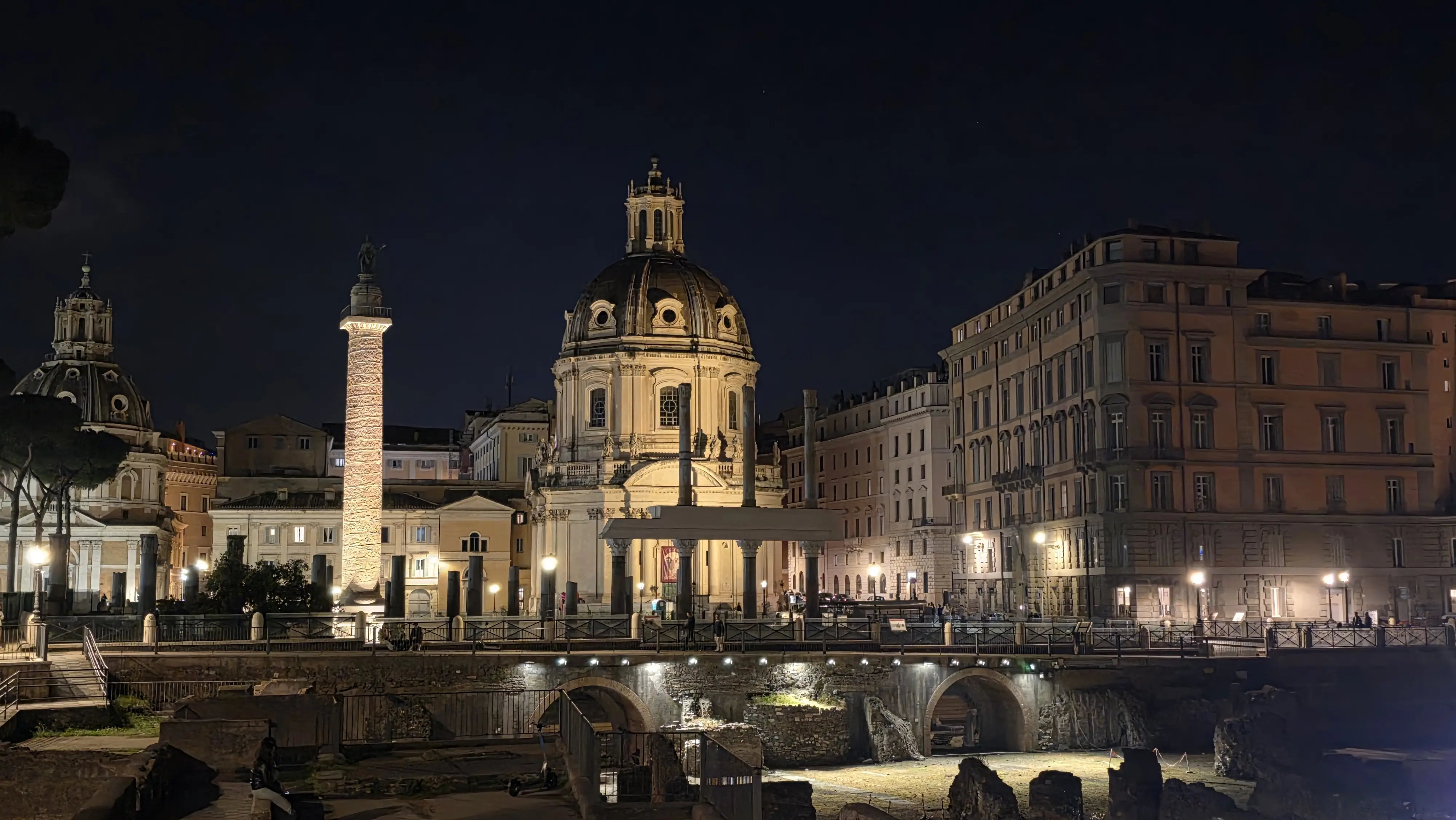
The libraries adjacent to the column also housed the emperor’s ashes, symbolically uniting knowledge, memory, and power. It was a public space infused with political poetry, affirming Rome’s might and Trajan’s legacy.
📚 A Civic Center of Learning and Law
Unlike earlier forums that centered on temples and religious rituals, Trajan’s Forum was a civic and intellectual space. The Basilica Ulpia was the grandest basilica Rome had ever seen, with rows of towering columns and vast marble floors. It wasn’t a church but a bustling hub for courts, commerce, and civic gatherings.
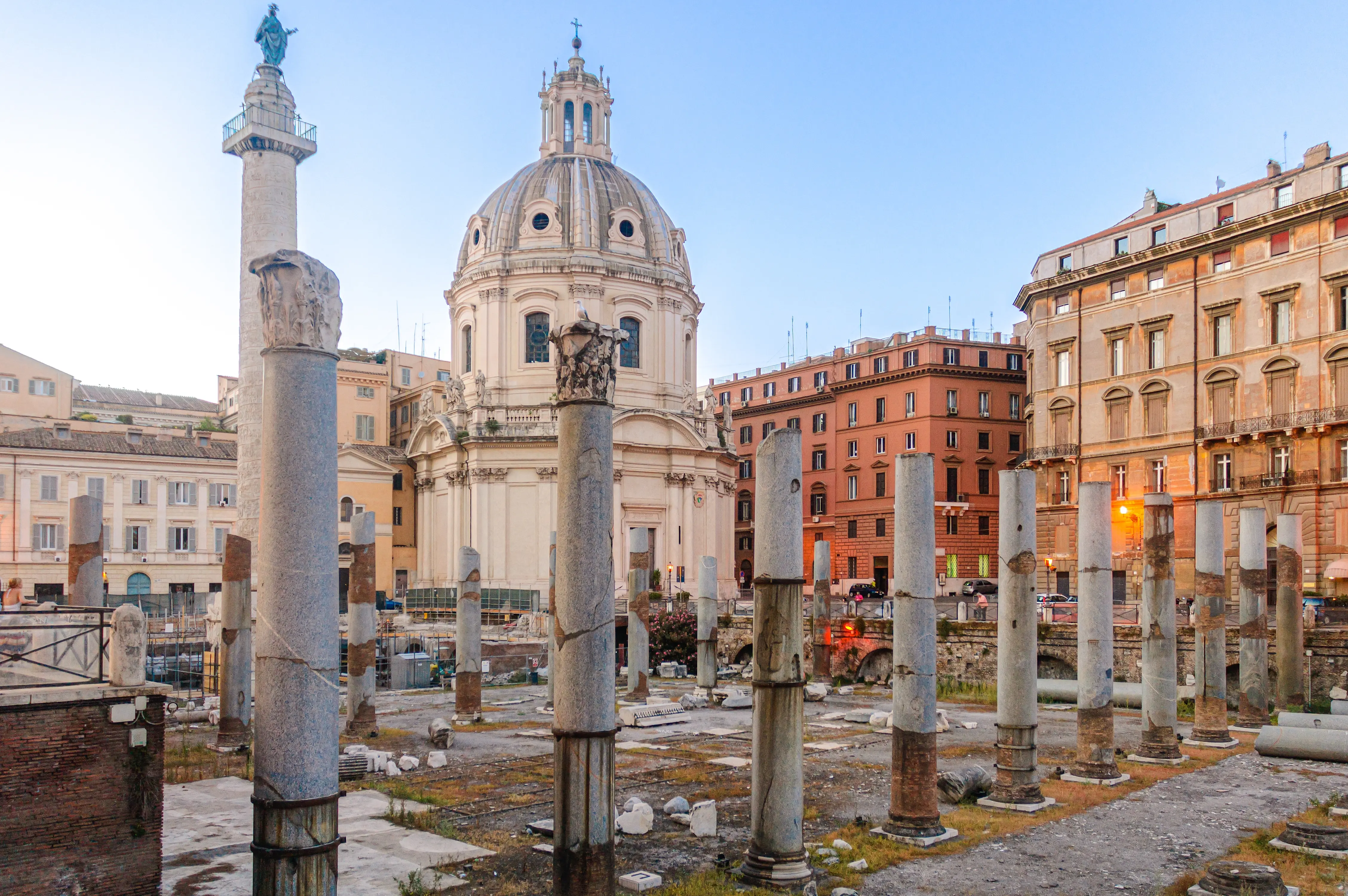
The two libraries flanking Trajan’s Column — one for Latin texts, the other for Greek — underscored the multicultural scope of the empire. Together, they held thousands of scrolls, serving as early knowledge centers and symbols of Rome’s scholarly ambitions. These buildings helped shift Rome’s architectural focus from temples to public service and cultural achievement, aligning perfectly with Trajan’s image as a wise and benevolent ruler.
🌿 Where to Feel Its Power Today
Though much of the Forum is in ruins, you can still experience its grandeur, especially at sunset, when golden light sweeps over the broken columns and ancient marble glows.
📍 Start at Via dei Fori Imperiali: walk past Caesar’s Forum, and you’ll see Trajan’s Forum opening up in stages, its columns and steps partially preserved.
📍 Trajan’s Column is fully intact and incredibly detailed. Bring binoculars or zoom in with your camera to appreciate the stone reliefs.
📍 The adjacent Museum of the Imperial Forums (inside Trajan’s Market) offers reconstructions and immersive exhibits that help you picture the complex in its full splendor.
While you’re here, you’ll also spot the entrance to Trajan’s Market, a stunning semicircular complex often considered the world’s first “shopping mall.” (We’ll explore that in a separate post!)
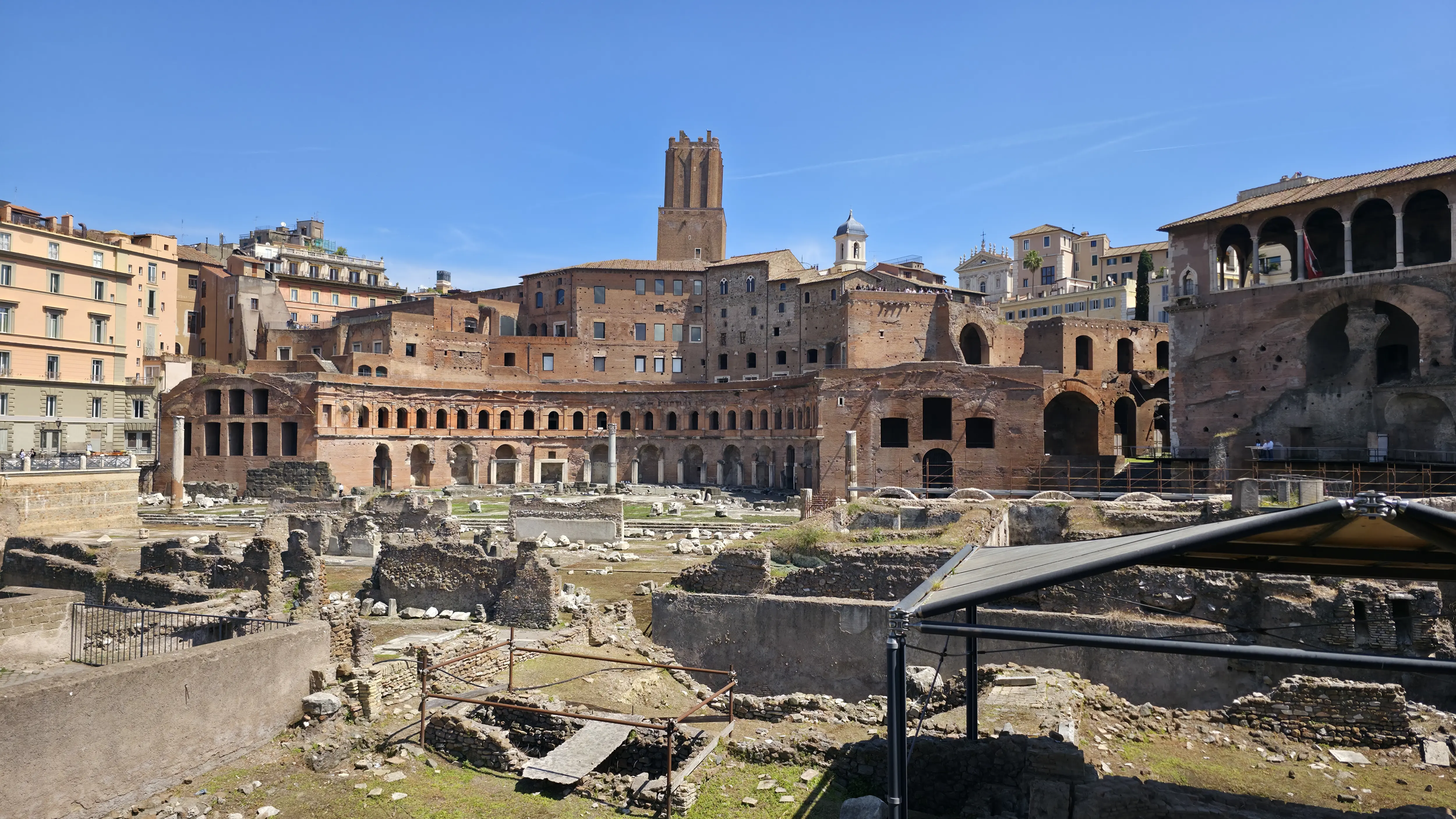
🧭 Practical Tips
- 🕒 Hours: Open daily, typically from 9:30am to 7:30pm. Last admission may be an hour before closing.
- 🎟️ Admission: Trajan’s Forum is viewable from the street for free. Trajan’s Market (with the museum) requires a ticket (~€15).
- 📸 Best Photo Spot: Across the street near the Altar of the Fatherland (Vittoriano), great panoramic views.
- 👟 Wear comfortable shoes: The area is vast with uneven terrain.
- 📖 Guided tours recommended: There’s little signage in the ruins; a guide or audio tour can greatly enhance your visit.
Final Reflections
Trajan’s Forum isn’t just Rome’s last imperial forum, it’s a breathtaking reminder of what leadership, vision, and legacy can look like when carved into stone.
What struck me most wasn’t just the grandeur, but the intentional design: a space built not just to celebrate power, but to elevate public life, learning, and collective memory.
In a city full of legends, this one left a quiet but profound impression. If you’re looking to connect with Rome’s heart through its ruins, this spot belongs on your list.
Hope you find a quiet moment there too,
Bubbly 🏛️✨

